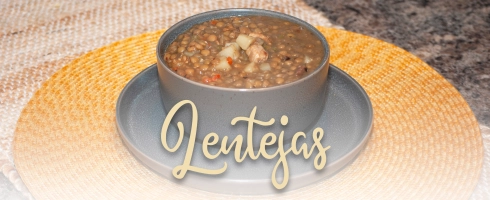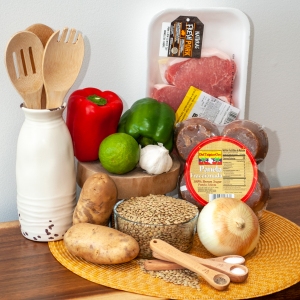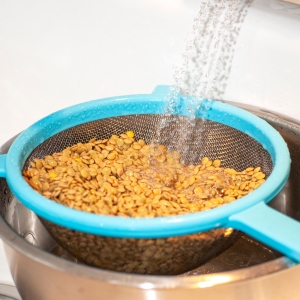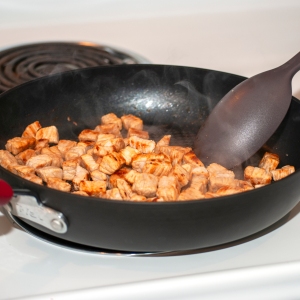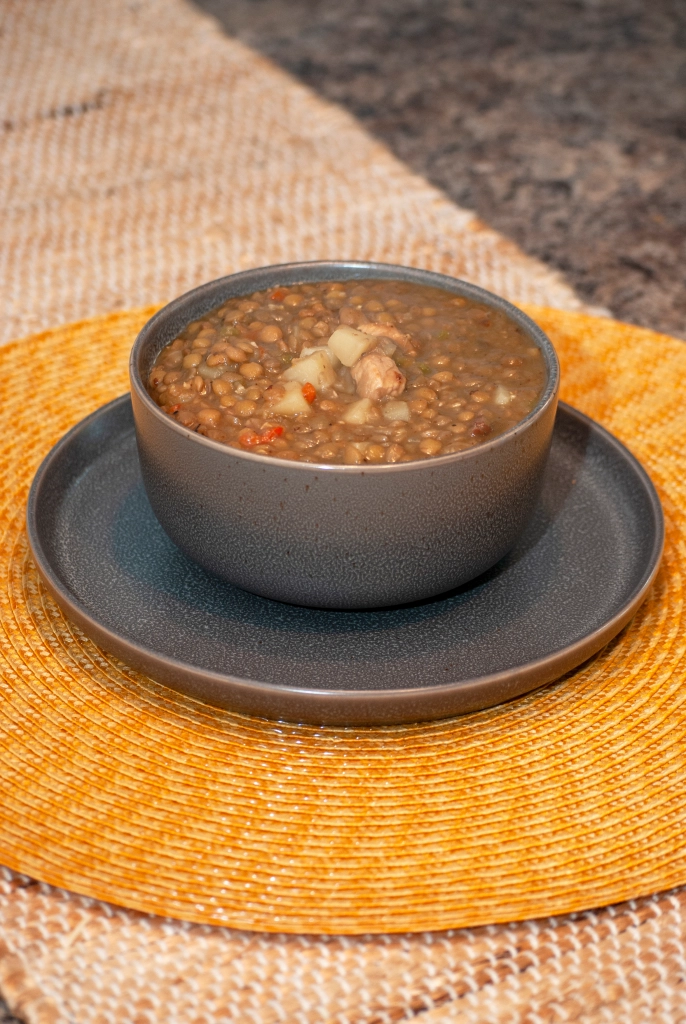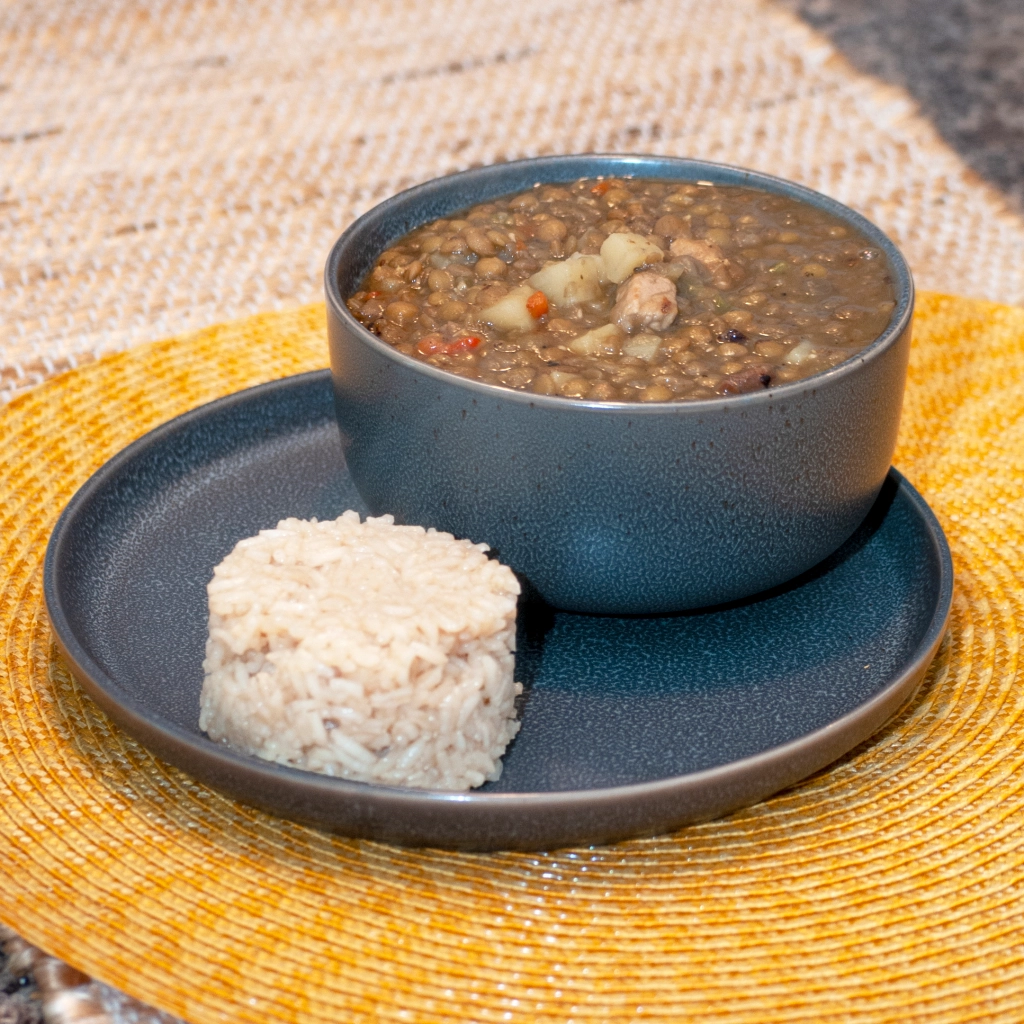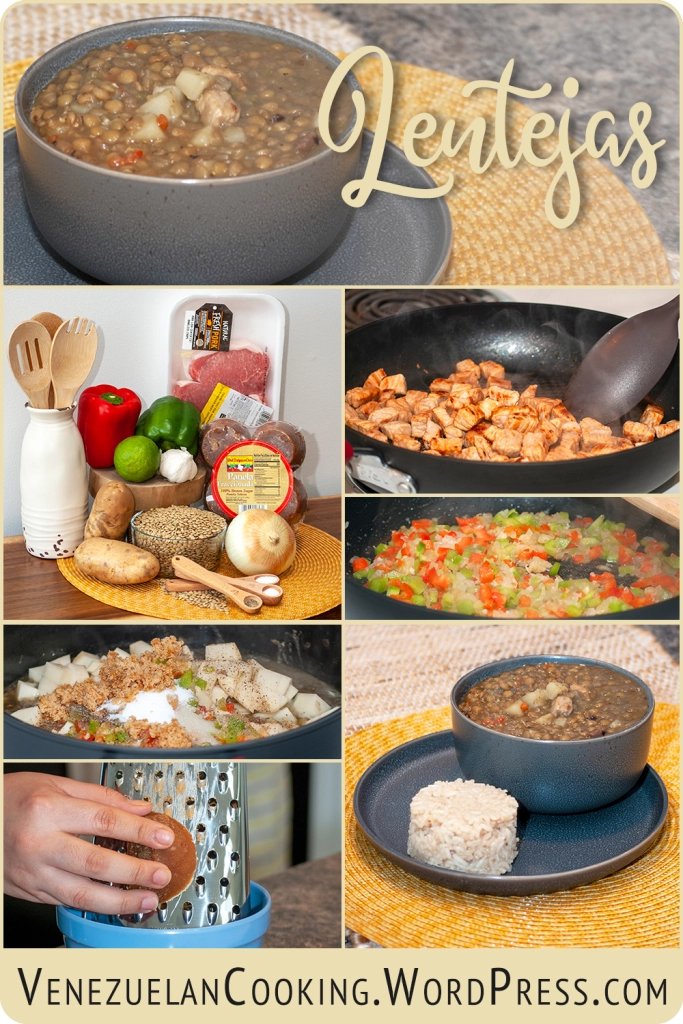One of the things I love about being Venezuelan and about my country and my culture is our traditions, folklore, old wives’ tales, customs, practices, unwritten laws, conventions, beliefs and legends. We have an endless supply of all of these. Some are older than Venezuela itself; some are new and created by the new generations; some are funny; some are crazy; some are appropriated from ancestors of other countries; some are 100% Venezuelan; and we definitely have some that are simply iconoclastic. However, there are good traditions and those usually revolve around our food. Such is the case of the Venezuelan Christmas Dinner and Christmas traditions. And of course, all the traditional pasapalos (h’ordeuvres) we serve in Venezuelan weddings, like tequeños.
Being a born-and-raised Venezuelan and living in the US for over 15 years, I have definitely found myself explaining (or trying to explain) those unconventional traditions to my american friends. Sometimes I really can’t explain them myself and I just end up saying “It’s just what we do”.
Most Venezuelans are religious, and some are very superstitious, a lot of our traditions reflect that. Some traditions are only present in certain celebrations or time of the year. I will name a few that I definitely grew up with, just for the purpose of illustrating that endless supply, but know that this is definitely not an all-inclusive list. These are the unconventional ones I have a hard time explaining to non-Venezuelans, as well as a few that are specific Venezuelan New Year’s Eve traditions, since it’s almost that time of the year, and they would be a great way to say goodbye to this crazy year that has been 2020.
¡Bendición! This one is hard to explain. Venezuelans ask for a blessing. Most children are taught to request a blessing from their elders when they say hello. However, as kids we don’t really understand this custom and we basically end up asking for a blessing from anyone who we think is older than us or any adults. The word Bendición literally means blessing, so you say “Bendición abuela” (blessing grandma) and then she responds by giving you the blessing with “Dios te bendiga” (God bless you). You are supposed to say this to your parents, aunts and uncles, and grandparents. But again, you don’t really understand or get the rules as a kid, so you end up saying it to anyone who is older than you, including cousins, strangers, your friends’ parents, your parents’ friends, and even the dog. This custom stays with you even when you become an adult, but you understand the rules now and only say it to family members and those you know expect you to say it, especially if they are religious. If you forget, your family member will surely remind you with a “¿Que? ¿Tú no pides la bendición?” (What? You don’t ask for a blessing?).
One doesn’t place one’s purse on the floor. Throughout my childhood I was always scolded when accidentally placing a woman’s purse on the floor. The belief is that if you do so, your money will run/escape from your purse. This means that you will be losing money in the near feature.
Pass the salt. Venezuelans believe when you pass the salt to someone else at the table, you must place it on the table, and the other person must pick it up from the table. You cannot pass the salt from your hand directly to the other person’s hand. If you do so, there will be a fight/disagreement between the both of you.
The never-ending Happy Birthday song. I’m sure you’ve heard the Spanish version, which is Cumpleaños Felíz. However, unless you have been to a Venezuelan birthday celebration, you probably haven’t heard our super long prologue to Cumpleaños Felíz, which seems to get longer and longer every year. Basically, you have to make sure you have long enough candles, so they don’t reach the cake before the song is over. Here are the entire lyrics for the song (the most traditional version).
Ay, qué noche tan preciosa, es la noche de tu día, todos llenos de alegría en esta fecha natal Tus más íntimos amigos esta noche te acompañan, te saludan y desean un mundo de felicidad. Yo por mi parte deseo lleno de luz este día, todos llenos de alegría en esta fecha natal. Y que esta luna plateada brille su luz para ti, y ruego a Dios porque pases un cumpleaños feliz. Cumpleaños feliz. te deseamos a ti, Cumpleaños… Cumpleaños feliz.
Here are Just Some of the Crazy Venezuelan New Year’s Eve Traditions
Luggage. Those who wish to travel in the new year should take their luggage and walk with them down the street or around the block. They say the further you walk, the longer your trips will be.
Yellow Underwear. This tradition states that in order to attract good luck in the new year, you should wear yellow underwear on New Year’s Eve.
12 Grapes for 12 Bell Tolls. You must eat one grape for each of the 12 bell tolls at midnight. For each grape, you can have one wish for the new year, you make one wish per grape as you eat each grape.
Lentejas de la suerte | Lucky Lentils. This one is definitely the reason for this post and recipe. There is a tradition in Venezuela where you eat lentil soup during New Year’s Eve or New Year’s Day. Some prefer to just eat a spoonful during NYE and some a bowl for lunch or dinner on NYD. It was supposedly an Italian tradition in the middle Ages, that we later adopted. Some people believe it was just an overproduction of lentils during the season that led to them being consumed at a national level during Christmas. Others say that it used to be that people would gift friends and family a bag of lentils to wish them good fortune in the new year. The current belief is that eating lentils, or even just holding a handful of uncooked lentils, means that you will have a new year filled with abundance, riches and money. This is usually accompanied with carrying cash on your hand or pockets on NYE. The most common tradition is to serve a big bowl of lentils on New Year’s Eve and provide a spoon for each guest at the table so they can have a spoonful at the end of the 12th bell toll.
Nevertheless, reading all the other traditions we have to do, like the eating of the 12 grapes for each 12-bell tolls at the end of the night, I am not sure how you’re supposed to complete all these traditions/rituals as well as hug each family member and wish them a happy new year and answer your phone to hear happy new year from those abroad. So maybe just pick one of these funny and silly traditions and just make sure you enjoy your time with your family and friends. Also, I would love to hear from the rest of you, so make sure you write your own crazy Venezuelan traditions on the comment section at the end of this post, and if you do end up picking the lentil tradition, be sure to try my recipe below.
Finally, a big thanks and shoutout to my sister, Mariale, for making this delicious recipe with me this year.
Note: The most traditional and original recipe for this lentil soup uses one pound of pork ribs with very little fat and cut in medium sized pieces. However, most people prepare them with bacon because it’s easier. Other options are pancetta, pork chops or in our case, pork loins. Another ingredient that is up for debate is the tomatoes, some people add them, some people don’t.
What you need:
– 1 lb. Bag of Lentils
– 12 Cups of Water
– 1/3 Large Onion, cut in half
– 1 lb. Pork Loin Center Cut Boneless Chops
– ¼ Cup of Water
– 1 Lime
– 1 lb. Potatoes, peeled and cut in small pieces
– 5 tsp. Salt
– ¼ tsp. Pepper
– 2 tbsp. Grated Papelón
Sofrito:
– 1 tbsp. Extra Virgin Olive Oil
– 2/3 Large Onion, diced
– 3 Garlic Cloves, chopped
– ½ Green Bell Pepper, diced
– ½ Red Bell Pepper, diced
– ½ Cup Tomatoes, diced without seeds
Preparation:
1. Wash the lentils using a strainer and water.
2. On a large pot, add the 12 cups of water, the lentils and 1/3 of the large onion cut in large pieces. Cook at high heat until boiling and then cook at medium heat until the lentils soften, about 20 minutes.
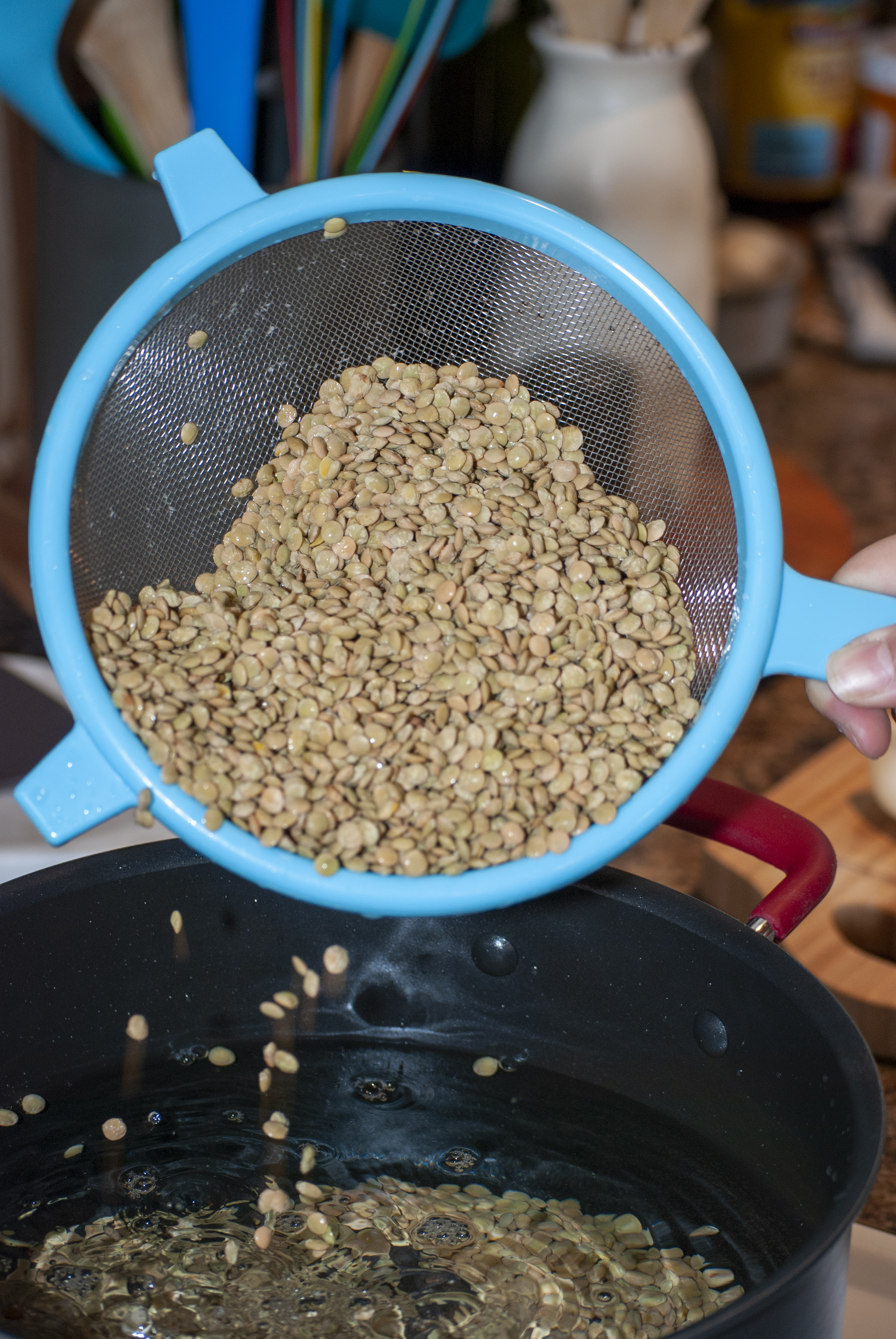
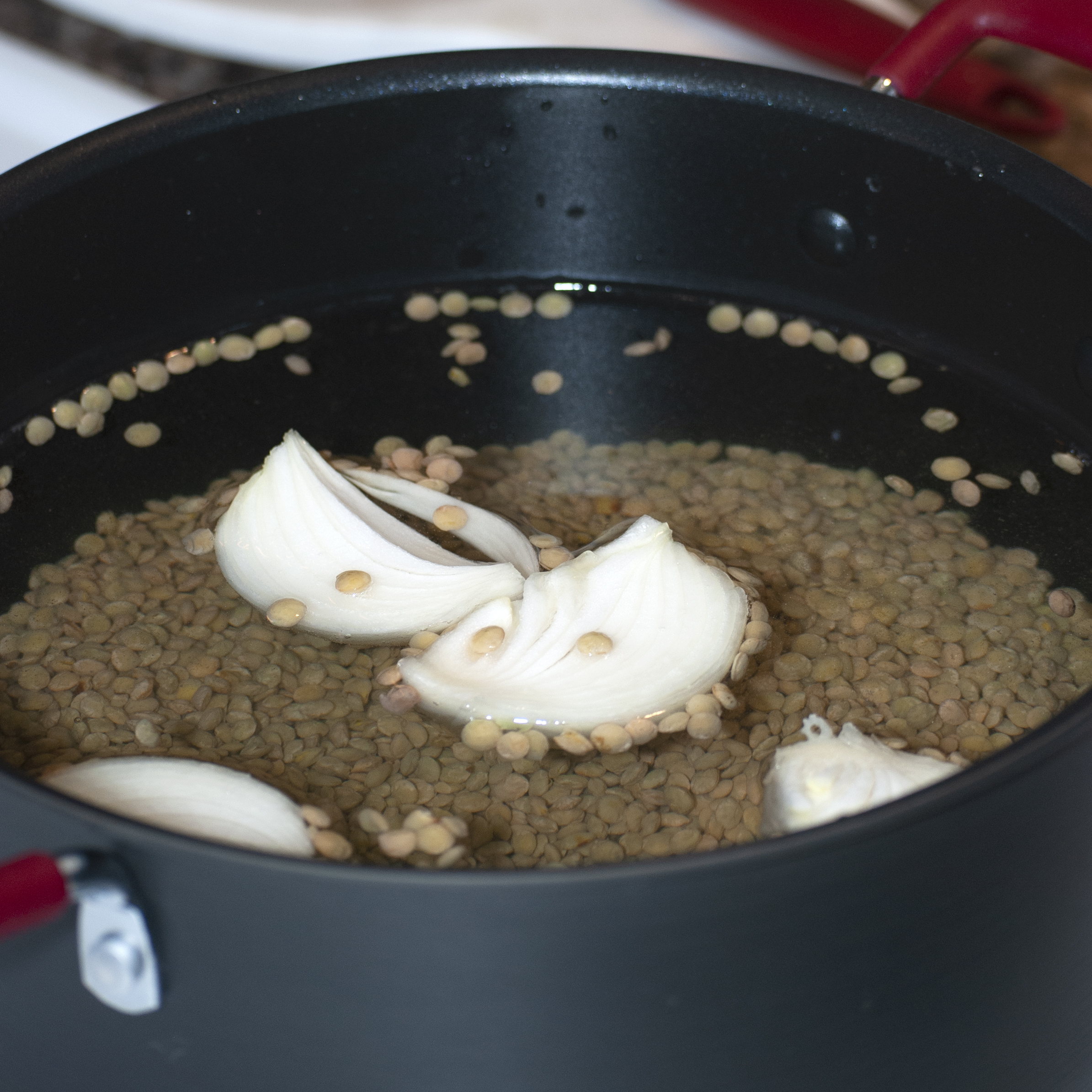
3. In the meantime, remove the extra fat from the pork, and then wash with running water and use the lemon cut in wedges to rub and wash the pork. Then cut in small cubes of about half inch each.
4. On a small pan add the ¼ cup of water and the pork pieces. Bring to a boil and then cook at high heat until the water has completely evaporated, and the pork starts to brown. About 10 to 15 minutes.
5. At this point the lentils should have soften. Add the pork pieces to the lentil pot, bring to a boil again on high heat and then cook on medium heat for 30 additional minutes.
6. On a small pan start to make the sofrito adding the olive oil, the rest of the diced onion, and the chopped garlic cloves and cook at medium to high heat for 5 minutes.
7. Add the bell peppers and tomatoes to the sofrito and cook for another 5 minutes.
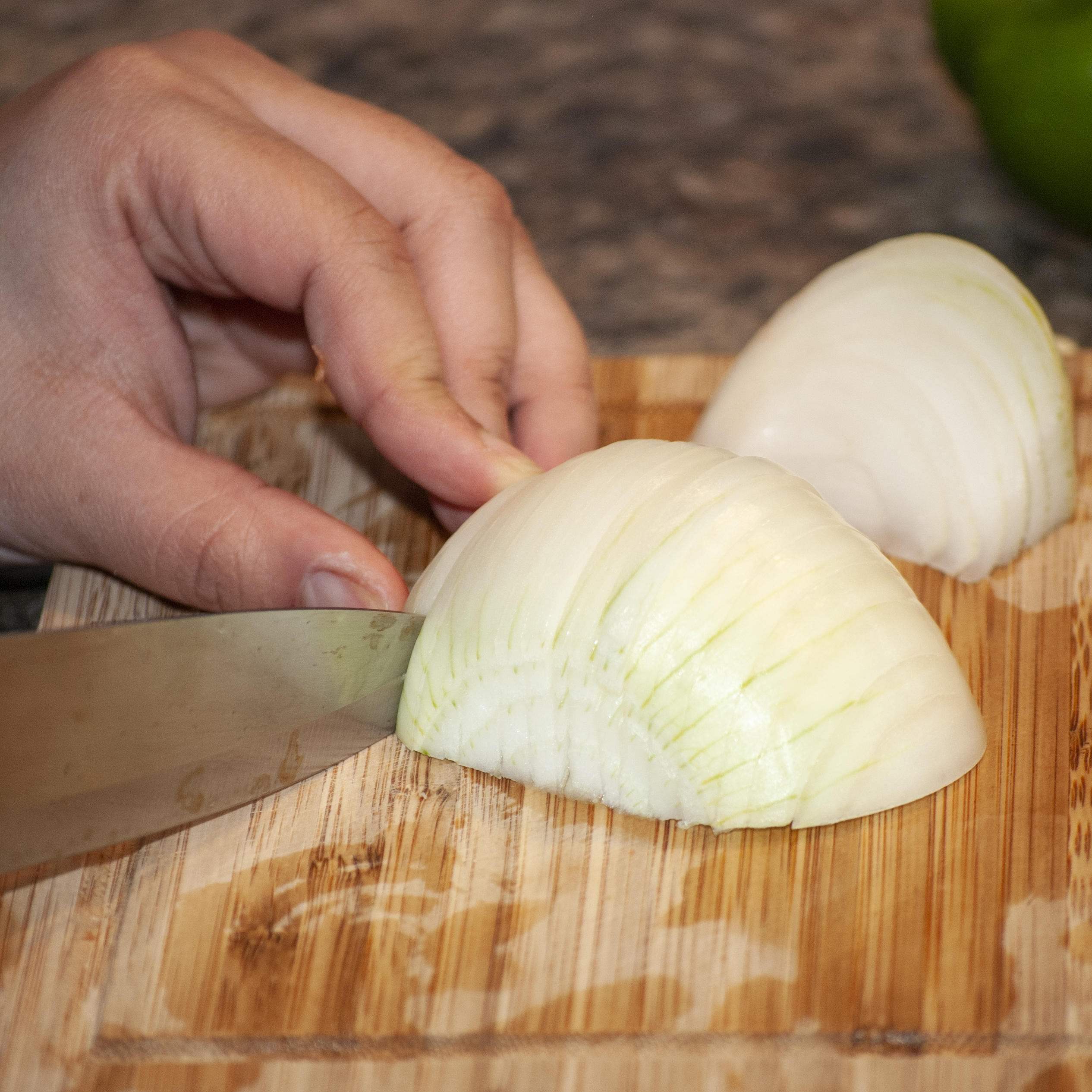
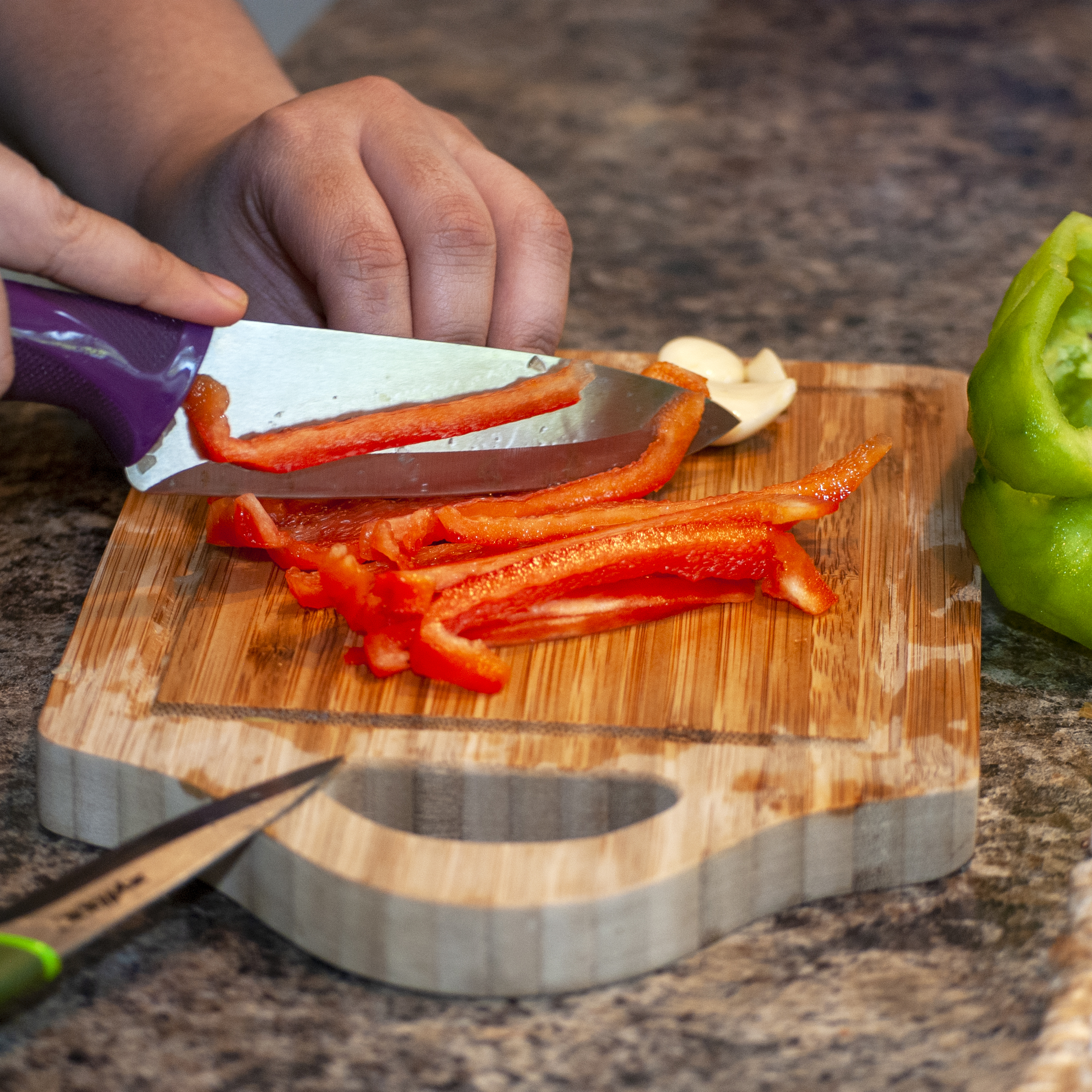
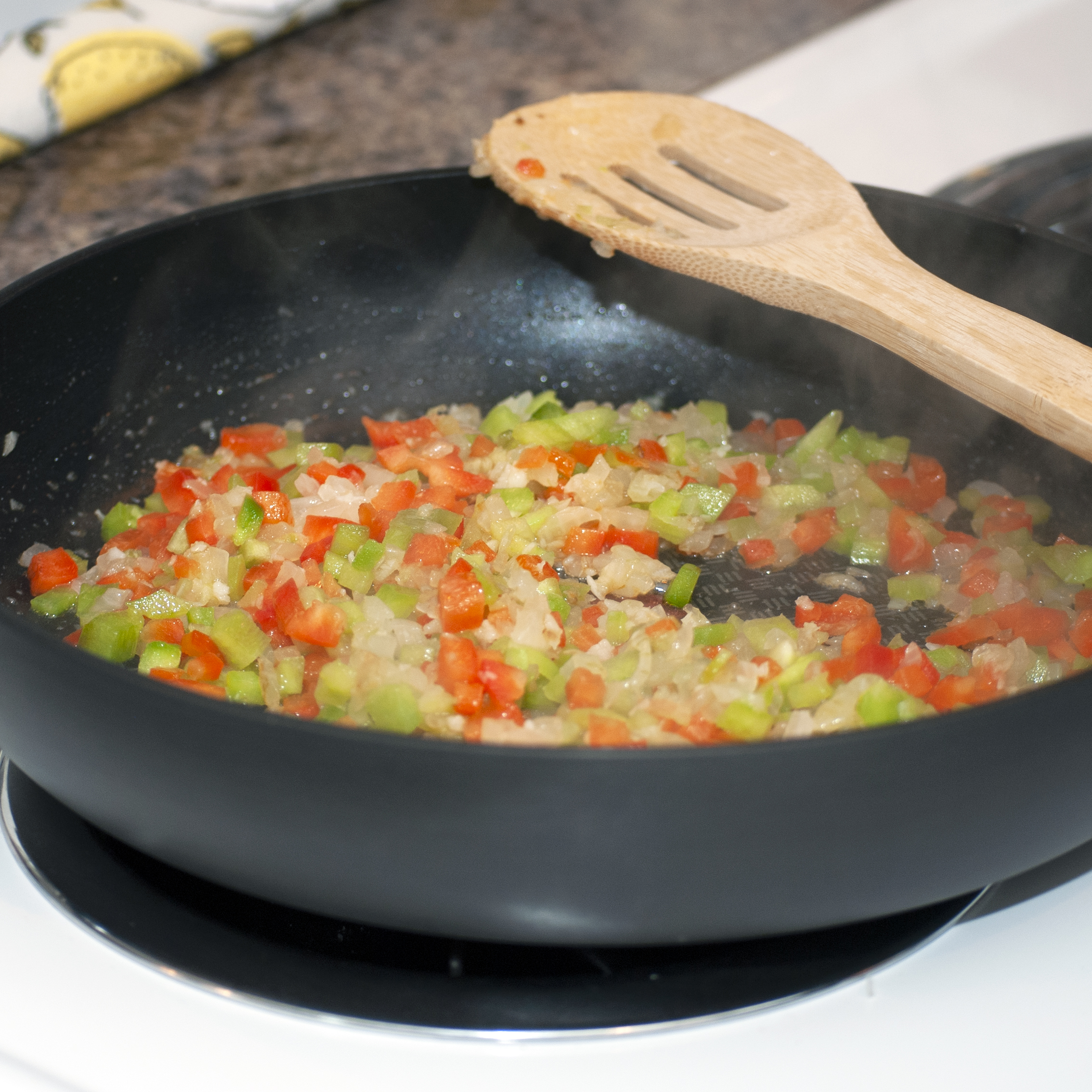
8. Add the sofrito mix to the pot with the lentils without draining it.
9. Add the peeled and cut potatoes, salt, pepper and grated papelón. Turn to high heat again and once it starts to boil, cook at medium heat for another 20 minutes, or until the soup starts to thicken a bit.
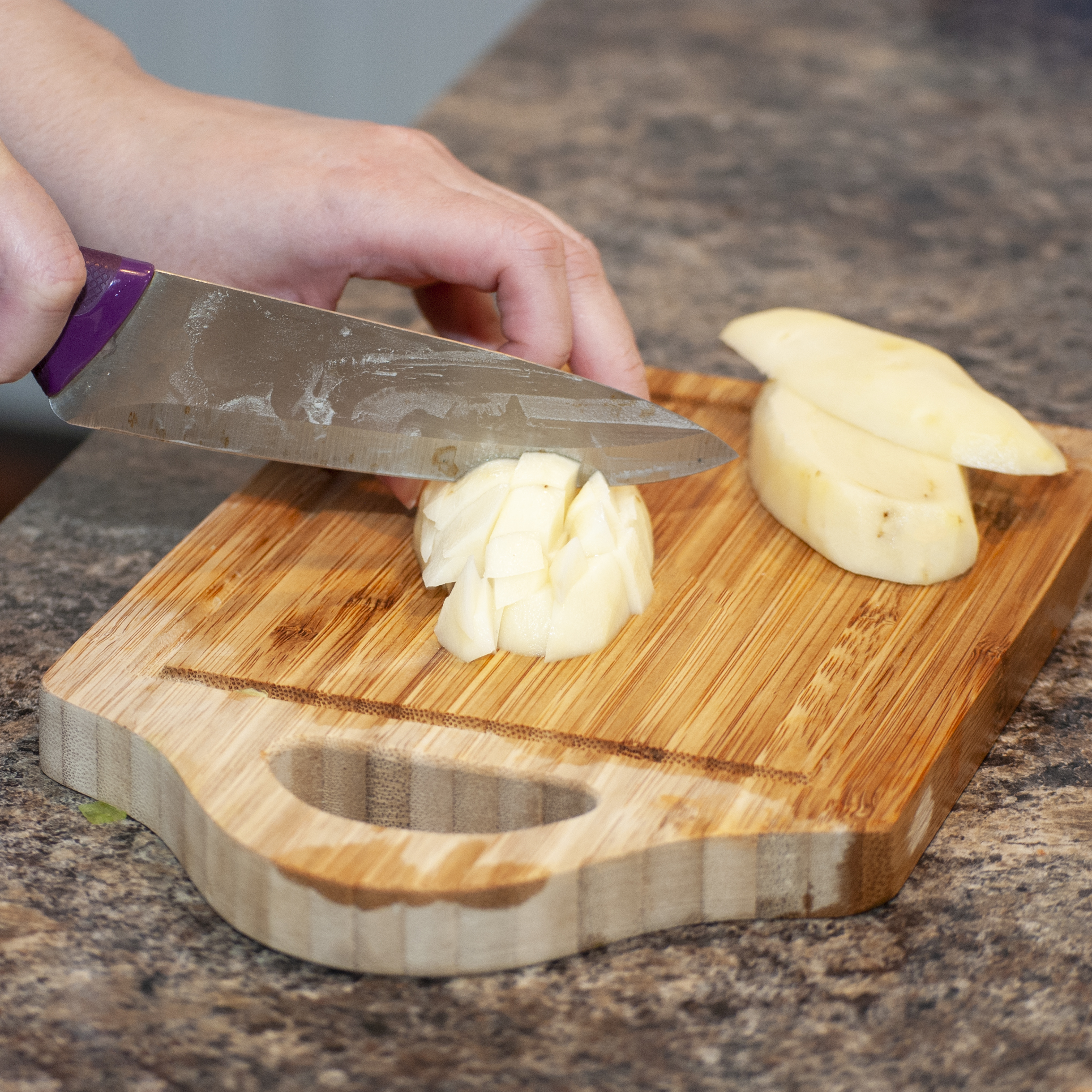
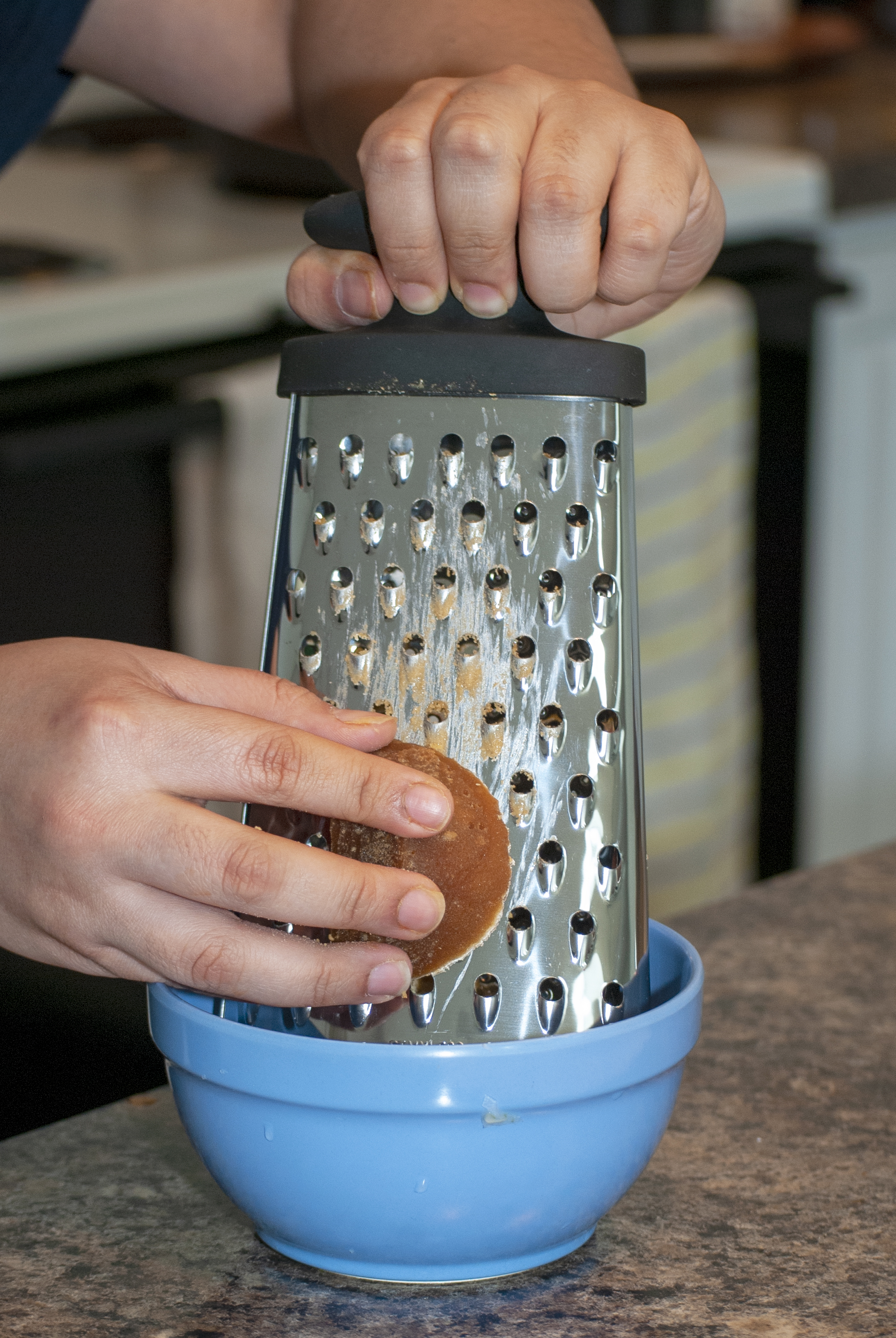
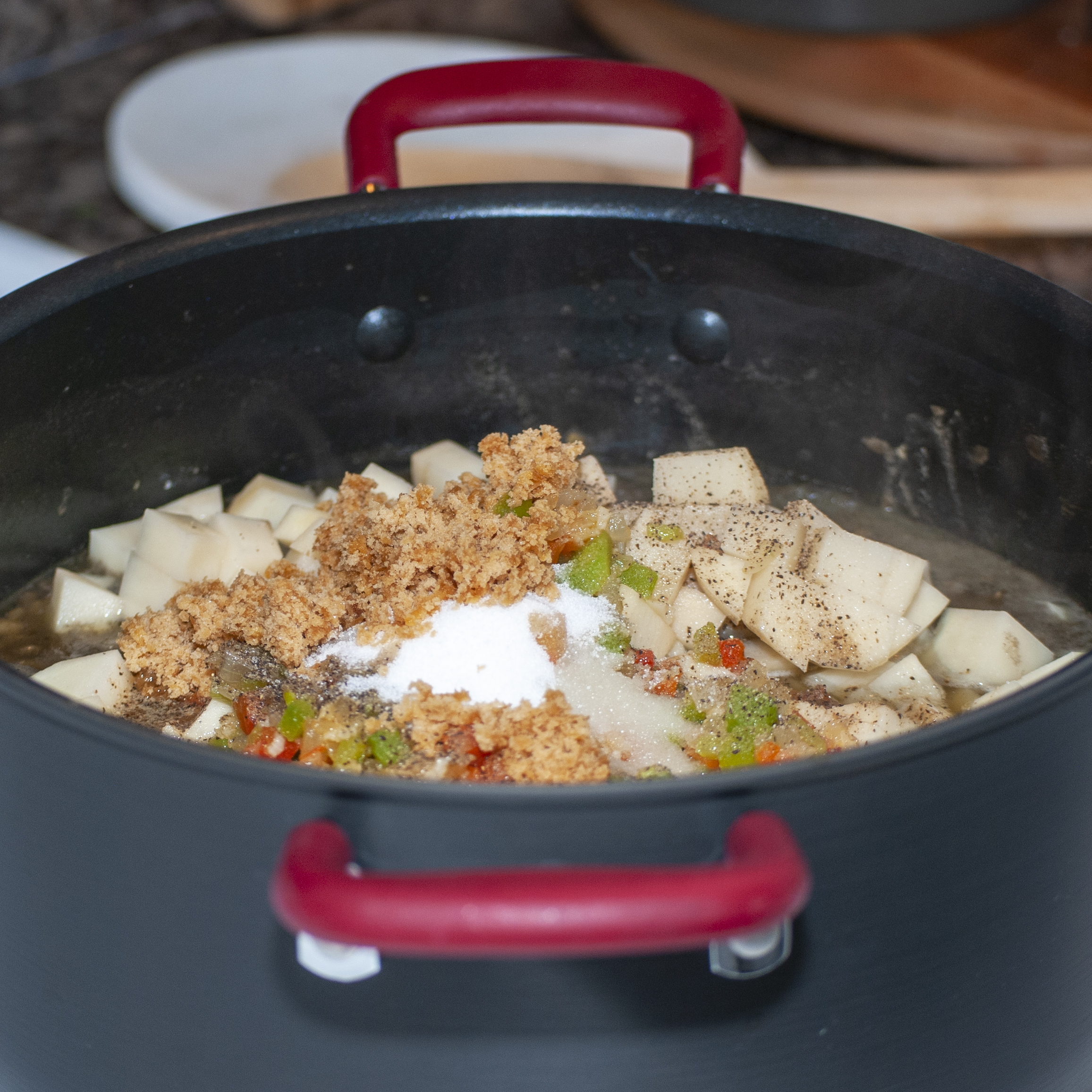
10. Before serving, remove the big chunks of onion.
11. Serve as a main dish in a soup bowl, serve with a side of rice, or serve as a side dish.

